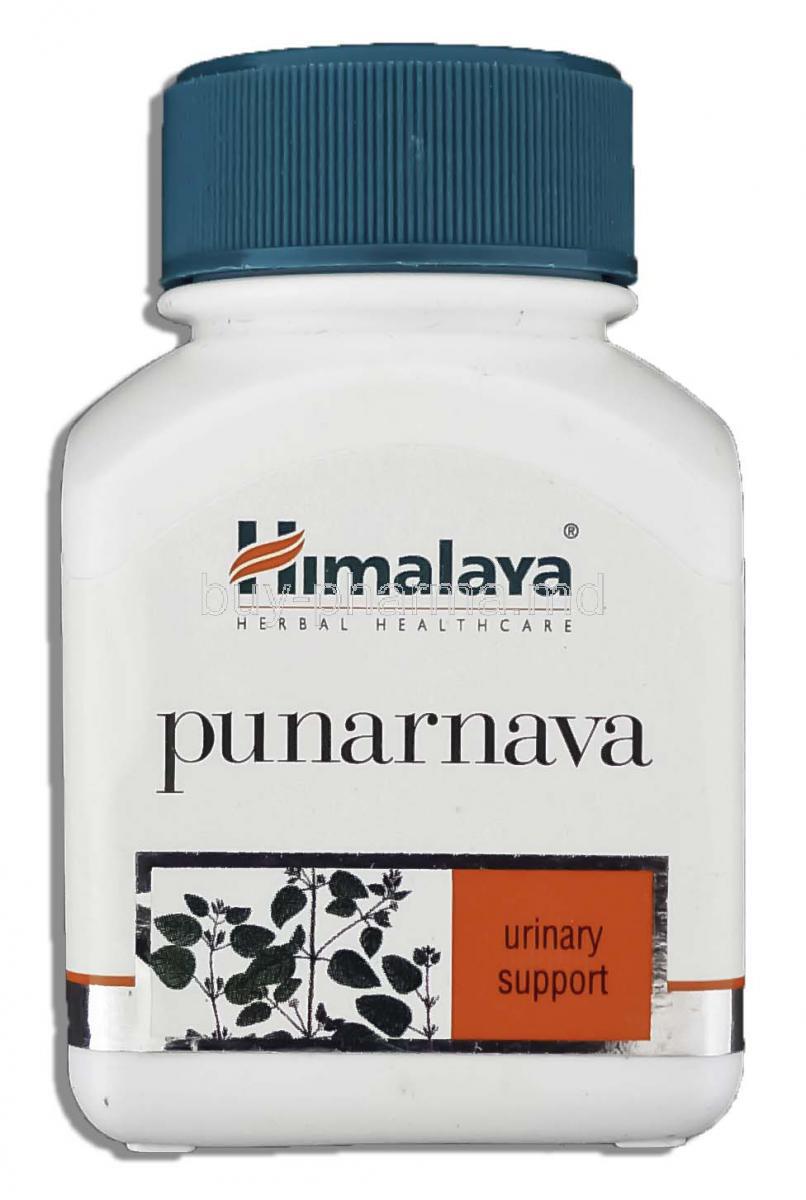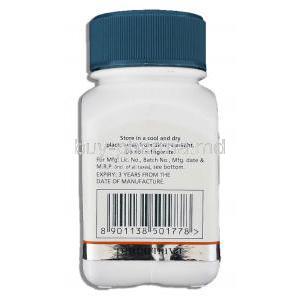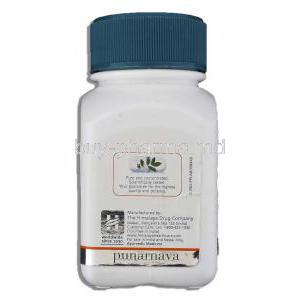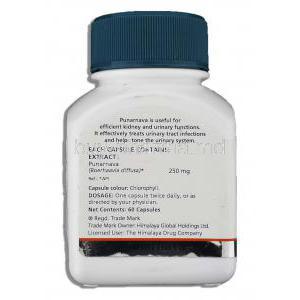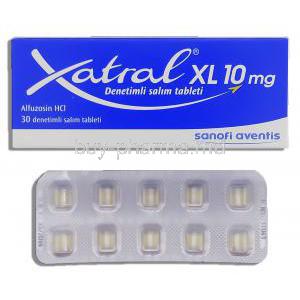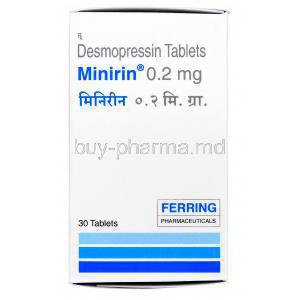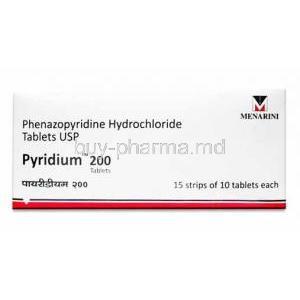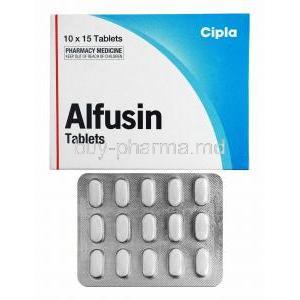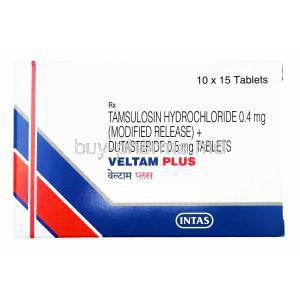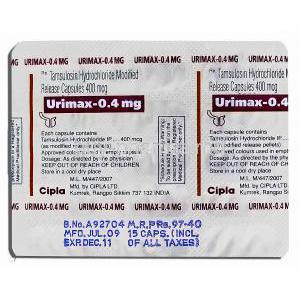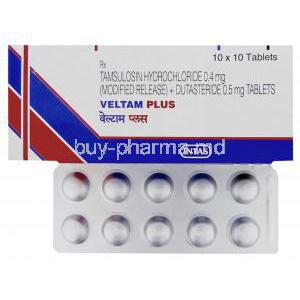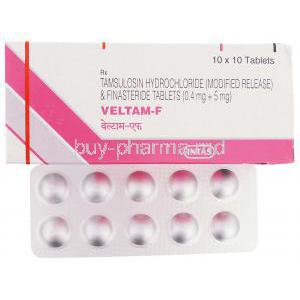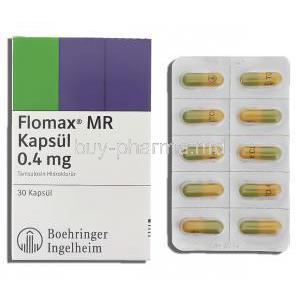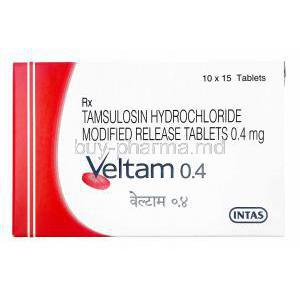1. Introduction to Himalaya Punarnava
Punarnava, scientifically known as Boerhavia diffusa, is a revered botanical in classical Ayurvedic pharmacopeia, celebrated for its rejuvenating properties. The name "Punarnava" literally translates to "renewed again," symbolizing its restorative and revitalizing potential, particularly in renal and hepatic systems.
Himalaya Drug Company harnesses this age-old wisdom in a modern, standardized formulation known as Himalaya Punarnava. Each tablet delivers a consistent dosage of pure extract to ensure reliable therapeutic efficacy. Ideal for long-term wellness regimens, it supports vital organ systems through a gentle, plant-based approach.
This supplement is especially beneficial for individuals dealing with fluid retention, liver dysfunction, or urinary tract concerns. It is widely used by wellness-conscious consumers, patients with chronic kidney or liver issues, and those seeking holistic preventive care.
2. Comprehensive Uses of Himalaya Punarnava (Therapeutic and Off-label)
2.1 Ayurvedic Uses and Clinically Recognized Indications
- Renal and Urinary Support: Promotes diuresis in nephrotic syndrome, aids in kidney stone prevention, and supports urinary tract detoxification.
- Edema and Fluid Overload: Reduces swelling and bloating caused by fluid retention through natural elimination pathways.
- Liver Disorders: Used traditionally for jaundice, fatty liver, and hepatomegaly due to its liver-protecting phytochemicals.
- Digestive Health: Offers mild laxative effects, supports bowel motility, and alleviates constipation caused by systemic inflammation.
2.2 General Wellness and Preventive Health Applications
- Detoxification: Encourages systemic cleansing by enhancing kidney and liver filtration processes.
- Immune Support: Antioxidant-rich content helps regulate immune response and neutralize free radicals.
2.3 Off-Label and Emerging Applications
- Weight Management: May support healthy weight through improved metabolic waste removal and mild diuretic action.
- Skin Health: Anecdotal reports suggest benefits in managing acne and other inflammatory dermatoses.
- Joint Health: Utilized in Ayurvedic practice for rheumatic conditions due to its anti-inflammatory properties.
- Respiratory Aid: Sometimes used as adjunct therapy for asthma or respiratory congestion.
3. How Himalaya Punarnava Works (Mechanism of Action)
Himalaya Punarnava exerts its action through a multi-pathway mechanism rooted in the phytochemical complexity of Boerhavia diffusa.
- Diuretic Action: Enhances renal fluid excretion by acting on nephrons without disturbing potassium levels.
- Anti-inflammatory Effects: Reduces oxidative and inflammatory mediators via suppression of prostaglandins and cytokines.
- Hepatoprotection: Compounds like punarnavoside and boeravinone provide cytoprotective action to liver cells.
- Immunomodulation: Alters immune cell response to reduce hypersensitivity and improve systemic immunity.
4. Composition and Standardized Herbal Ingredients
- Main Active: Boerhavia diffusa extract (root) – standardized to ensure optimal potency.
- Extraction Ratio: Typically 250 mg of extract per tablet, equivalent to several grams of raw herb.
- Excipients: Cellulose, magnesium stearate, and other stabilizers for tablet integrity.
- Quality Certifications: Manufactured under GMP-certified facilities with validated safety profiles.
5. Recommended Dosage and Administration Guidelines
5.1 Standard Adult Dosage
- One tablet twice daily with water, post-meal.
- Recommended course: 3–6 weeks, followed by reassessment or cycling as needed.
5.2 Dosage Modifications Based on Indications
- For edema or fluid overload: May be used alongside physician-prescribed diuretics with caution.
- For liver support: Longer administration (up to 3 months) under supervision may be advised.
5.3 Best Practices for Administration
- Can be taken with or without food; food may reduce gastric irritation risk.
- Avoid taking concurrently with other potent diuretics unless directed.
6. Potential Side Effects and Safety Profile
6.1 Common Side Effects
- Mild nausea or gastrointestinal bloating in some individuals.
- Occasional rash or itching due to plant hypersensitivity.
6.2 Rare and Serious Adverse Reactions
- Electrolyte imbalance with extended high-dose use.
- Transient elevation of liver enzymes in susceptible patients.
7. Drug and Herb Interactions
- Diuretics: May amplify potassium loss or cause additive effects.
- Antihypertensives: Enhanced hypotensive effects; monitor blood pressure regularly.
- NSAIDs: Risk of renal stress when co-administered.
- Anticoagulants: Caution due to potential mild antiplatelet activity of the herb.
8. Contraindications for Himalaya Punarnava Use
- Known allergy to Boerhavia diffusa or excipients.
- Low blood pressure or concurrent intensive diuretic therapy.
- Advanced chronic kidney disease without nephrologist oversight.
- Severe liver cirrhosis or hepatic decompensation cases.
9. Warnings and Important Precautions Before Use
- Not a substitute for prescribed medications in chronic kidney or liver disease.
- Periodic monitoring of electrolyte levels advised in long-term use.
- Discontinue use if gastrointestinal discomfort persists beyond 72 hours.
10. Special Considerations for Careful Administration
10.1 Monitoring in Chronic Illness
For individuals with pre-existing health conditions, especially those involving the renal or cardiovascular systems, careful monitoring is imperative during prolonged Himalaya Punarnava usage. Though herbal in origin, its pharmacodynamic profile necessitates oversight when used long-term.
- Renal Function Monitoring: Regular blood urea nitrogen (BUN) and serum creatinine evaluations are advised for patients on extended courses to detect any renal burden.
- Comorbid Conditions: In patients with diabetes or hypertension, dual attention to glucose levels and blood pressure is recommended, given Punarnava’s potential mild hypotensive and glycemic effects.
10.2 Avoidance in Specific Patient Groups
- Chemotherapy and Immunosuppression: Patients undergoing chemotherapy or those on immunosuppressive regimens should avoid Punarnava unless specifically cleared by their oncologist or physician. The herb’s immunomodulatory nature may interfere with treatment goals or immune balance.
11. Use in Special Populations
11.1 Administration to Elderly Patients
Elderly individuals often present with altered pharmacokinetics and multiple comorbidities. As such, their use of Punarnava requires tailored attention.
- Renal Clearance: Reduced glomerular filtration rate (GFR) in older adults may necessitate dosage reduction to prevent cumulative effects.
- Dehydration and Electrolytes: Due to natural diuretic activity, elderly users must be monitored for early signs of dehydration or electrolyte imbalance, particularly hypokalemia or hyponatremia.
11.2 Use in Pregnant and Nursing Women
The safety of Himalaya Punarnava during pregnancy and lactation remains inadequately established through clinical trials.
- Pregnancy: Punarnava should be avoided during pregnancy unless specifically advised by a qualified healthcare provider. In high doses, it may pose a theoretical risk of uterine stimulation.
- Nursing Mothers: There is insufficient evidence regarding excretion of the herb into breast milk. Hence, caution is warranted during lactation.
11.3 Administration to Children
- Under 12 Years: Himalaya Punarnava is not routinely recommended for children below the age of 12 due to limited pediatric safety data.
- Pediatric Considerations: Any use in children should be strictly under physician supervision, with attention to dosage and response monitoring.
12. Overdose and Management
Although rare, an overdose of Himalaya Punarnava can occur, particularly when taken in excess or combined with other diuretic agents.
- Signs of Overdose: Symptoms may include excessive fatigue, dehydration, dizziness, or signs of electrolyte imbalance such as hypokalemia (muscle weakness, cramping).
- Emergency Protocol: Immediate cessation and hydration support are first-line responses. Electrolyte panel testing may be required in clinical settings.
- When to Seek Help: Medical attention should be sought if severe drowsiness, persistent vomiting, cardiac irregularities, or confusion arises.
13. Proper Storage Instructions
- Environmental Conditions: Store the product in a cool (15–25°C), dry environment, shielded from direct sunlight and moisture exposure.
- Packaging Integrity: Ensure the bottle is tightly sealed to prevent contamination and degradation of the active compounds.
- Shelf Life: Always check the product’s expiry date. Discard any product that has passed its expiration, even if unopened.
14. Handling Precautions and Patient Guidance
- Child Safety: Keep out of reach of children to avoid accidental ingestion or misuse.
- Packaging Inspection: Do not use the supplement if the outer seal is broken or the bottle appears tampered with.
- Patient Education: Encourage users to follow the prescribed dosage schedule consistently for optimal results.
- Medical Consultation: Advise discontinuation and immediate consultation if symptoms such as persistent nausea, dizziness, rash, or fatigue occur.

